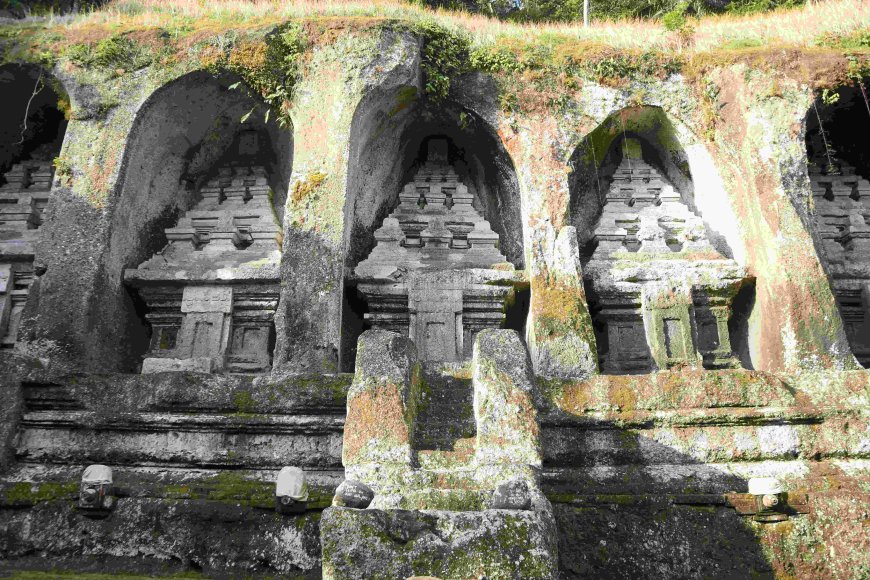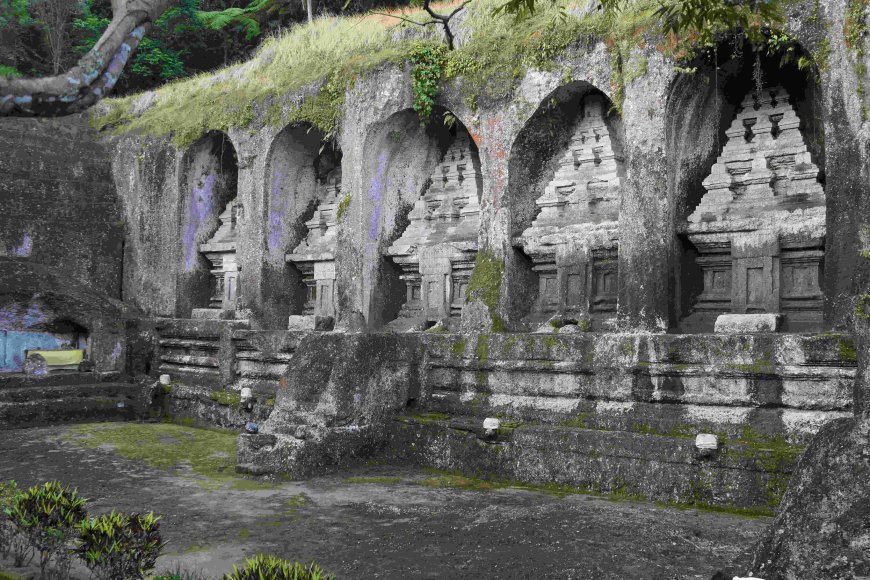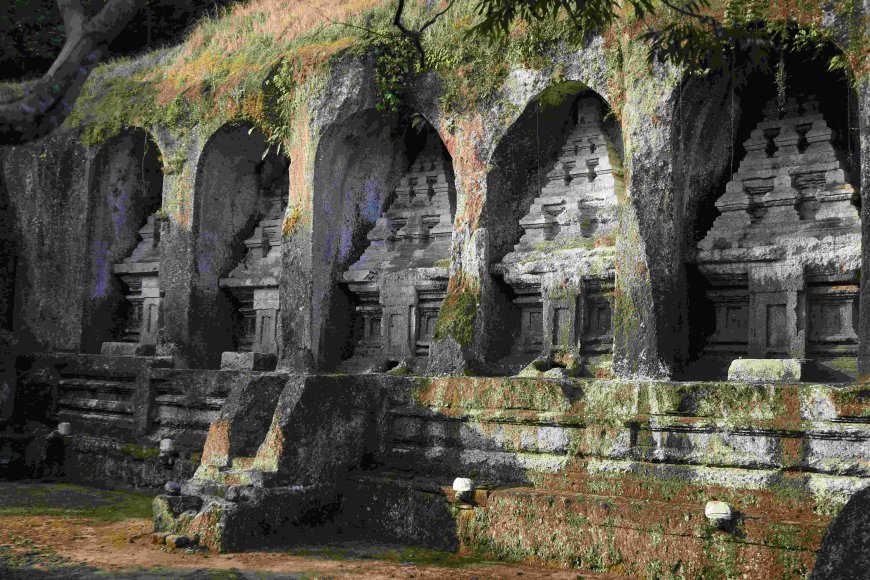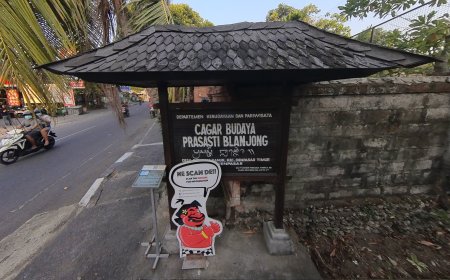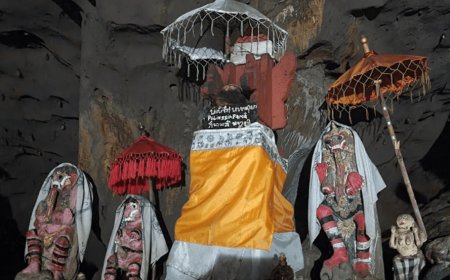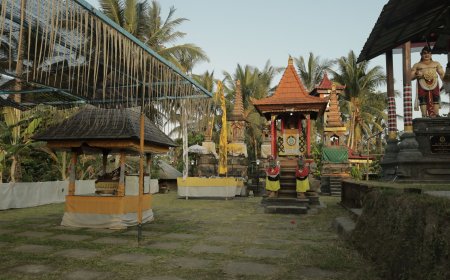Gunung Kawi Temple is a captivating temple complex located in Gianyar Regency, Bali, approximately 10 kilometers north of Ubud. Its breathtaking location lies within the lush green valley of the Pakerisan River, surrounded by steep cliffs that enhance its natural allure. What sets this temple apart is its uniqueness; unlike conventional temples constructed from whole stones, bricks, or volcanic rock, Gunung Kawi consists of carvings on the cliff walls of the volcanic rock along the river's edge. The name "Gunung Kawi" is said to originate from the words "Gunung" (Mountain) and "Kawi" (Carving), thus translating to "Temple Carved on the Mountain".
Gunung Kawi Temple also possesses distinct features that have made it a sacred site since ancient Balinese times. These temples hold great spiritual value, believed to be where the human world meets the world of the gods. They also carry significant historical value as places of remembrance for the rulers and their families who once held power in ancient Bali. Additionally, these temples have high aesthetic value, regarded as artistic masterpieces depicting the beauty and uniqueness of Bali.
It is estimated that Gunung Kawi Temple was constructed in the early 11th century CE during the reign of King Anak Wungsu of the Udayana Dynasty. The Udayana Dynasty ruled Bali from the 10th to the 12th century CE, with its first king being Udayana Warmadewa, also known as Marakata. King Udayana played a pivotal role in unifying Bali and establishing strong relations with kingdoms in Java, such as Sriwijaya and Mataram. This temple complex stands as a tribute to the spirits of King Anak Wungsu and his family members who have passed away. The Tengkulak Inscription dated 945 Saka (1023 CE) mentions a hermitage complex named Amarawati, believed by archaeologists to refer to the Gunung Kawi Temple area.
King Udayana was a ruler known for unifying Bali and fostering a close relationship with the Hindu religion. He founded many temples across Bali, including Gunung Kawi, as places of worship and commemoration for himself and his family. These temples also showcase Bali's ability to transform stone into magnificent and beautiful works of art. They serve as witnesses to the rich and diverse history and culture of Bali.
Gunung Kawi Temple is an exceptional example of ancient Hindu relief art carved directly into the stone cliffs. It comprises ten temples divided into three points: one on the east side of the Pakerisan River and two on the west side. The five temples on the east side are considered the main complex of the site. The northernmost temple in this series is believed to be the earliest. It bears an inscription in Kadiri Kwdrat script that reads "Haji Lumah Ing Jalu" meaning "The king was buried in Jalu (Pakerisan River)". This indicates that this temple was built as a place of worship for King Udayana's spirit. The other four temples in this series are strongly believed to have been constructed for the queen and children of King Udayana.
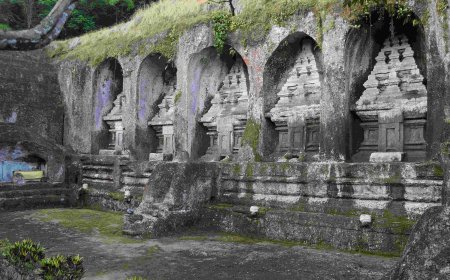
The Cluster of Temples on the East Side of the Pakerisan River (Source: Private Collection)
According to Dr. R. Goris, a Dutch archaeologist, the four temples on the west side of the Pakerisan River are believed to be dedicated to the four concubines of King Udayana. Meanwhile, the temple positioned further to the south is speculated to have been built for a high-ranking royal official, equivalent to a prime minister or royal advisor.
These temples are characterized by cube-shaped structures topped with pyramid-shaped roofs known as stupas. Stupas symbolize sacred mountains, which are the dwelling places of gods. Additionally, these temples feature entrance gates shaped like a "gapura" adorned with the image of Kala's head, symbolizing the destroyer of evil. These temples are thought to have served as places of worship and commemoration for the spirits of kings and their families.
One of the key architectural features of Gunung Kawi Temple is the large monolithic temples. Each temple stands about 7 meters tall and 2.5 meters wide, with sizable entrances and deep sanctuaries. What is most striking about these temples is the profusion of reliefs covering their walls. These reliefs depict various Hindu mythological figures, including gods and goddesses, fantastic creatures like elephants, and human figures believed to be revered members of the royal family.
The statue-shaped temples are characterized by human figures wearing traditional Balinese attire. These statues are believed to represent the rulers and their families who held power during ancient Bali. They are adorned with crowns, earrings, necklaces, bracelets, and belts symbolizing grandeur and glory. These statues are placed in front of the cube-shaped temples as a sign of reverence and protection.
The relief-shaped temples are known for depictions of daily life in ancient Balinese society. These reliefs portray scenes such as farming, hunting, and trading. They also feature motifs of animals, plants, and geometric patterns symbolizing the richness of Bali's natural and cultural heritage. These relief carvings are placed alongside the cube-shaped temples as decorative elements and narratives.
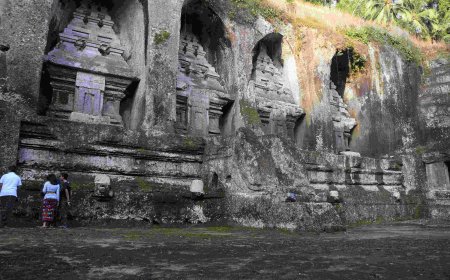
The Size Comparison of the Temples with Visitors (Source: Private Collection)
Gunung Kawi Temple is a sacred site for the Balinese Hindu community. At regular intervals, during the piodalan religious festivals, thousands of Balinese Hindus gather here to worship, conduct processions, and perform other religious rituals. The serenity and natural beauty of the surroundings, coupled with a strong religious aura, make it an ideal place for seeking spiritual peace and purity.
The temple complex includes the renowned Tirta Empul temple with its holy bathing pools. These pools are used for purification rituals, where Balinese Hindus cleanse themselves both physically and spiritually. The continuously flowing water from the sacred spring in these pools is believed to possess healing and purifying properties.
Gunung Kawi Temple is not only a significant place of worship for Balinese Hindus but also an intriguing tourist destination for those looking to experience Bali's rich history and culture. Visitors often descend steep stairs to reach this beautiful temple complex, providing an unforgettable adventure amid Bali's stunning tropical surroundings.
The architecture of Gunung Kawi Temple creates a captivating atmosphere, combining spectacular natural beauty with impressive artistry. This architecture is a testament to the richness of Hindu art and religion in Balinese culture, and Gunung Kawi Temple remains one of the most enticing and historically significant tourist destinations on the island, inviting visitors to experience its profound beauty and history.




















































